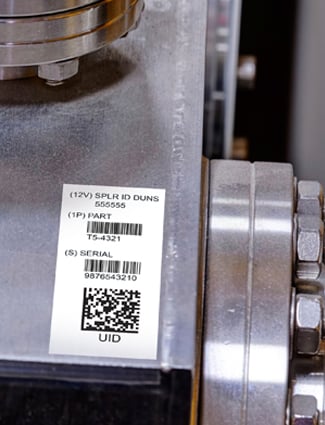Technology Shoring Up Oil, Gas Efficiency
03
February,
2023
2 MINUTE READ

Emerging in 2021 are new and improved offshore oil and gas operations. During a time of growing offshore energy demand, the global oil and gas industry is using an array of technology and data to meet production targets, improve operational efficiency, and boost worker safety. The mountains of data have spoken, and the offshore oil and gas industry is listening.
What the Numbers Say
The global demand for the offshore oil and gas industry is steady. Interests are turning to the glowing benefits of deep-water offshore drilling's efficiency. Technology is assisting in various ways: digital data, automation, robotics, and hazardous gas detection, among others.
Cognite CEO John Markus Lervik said that the key to Aker BP and Cognite's robotics initiative is that it combines industry-leading hardware and software. "By ingesting data collected by robots into Cognite Data Fusion, Aker BP engineers will be able to see it in context with data from across the company's operations and make data-driven decisions that improve efficiency and safety."
Efficiency and safety are steering progress in the global offshore oil and gas industry's mission to modernize. The number of reported work hours grew by 4% in 2017. The tasks workers face are changing as digital and machine learning technology increases. That change is resulting in fewer fatalities industrywide. There were 33 in 2017, a sharp drop from 50 the year before, according to the International Associations of the Oil and Gas Industry.
"The increase in technology and automation have undoubtedly improved efficiency in operations and have had a positive effect on employee safety," said Richard Taylor, an oil and gas safety instructor at West Texas Safety in Odessa, Texas. "Automation isolates employees from mechanical hazards that they used to be exposed to, thereby eliminating the hazards."
Safety and Asset Management
 Part of efficient operations and risk reduction methods include optimizing asset performance and maintenance. Digital data is helping to improve costs, productivity, performance, and reliability. Offshore rigs and floaters typically have more assets that are highly valuable. For example, according to recent data, subsea compression stations on the seabed cut labor costs, energy costs, and enhances safety. This automation method of extraction limits the number of people working in harsh environments. In turn, the digital asset data that the subsea station provides instruct workers on how to better manage assets. This data then helps avert most maintenance challenges and gives the insight to improve efficiency. Here are a few ways to enhance technology to improve asset management and safety on oil and gas projects:
Part of efficient operations and risk reduction methods include optimizing asset performance and maintenance. Digital data is helping to improve costs, productivity, performance, and reliability. Offshore rigs and floaters typically have more assets that are highly valuable. For example, according to recent data, subsea compression stations on the seabed cut labor costs, energy costs, and enhances safety. This automation method of extraction limits the number of people working in harsh environments. In turn, the digital asset data that the subsea station provides instruct workers on how to better manage assets. This data then helps avert most maintenance challenges and gives the insight to improve efficiency. Here are a few ways to enhance technology to improve asset management and safety on oil and gas projects:
- Keep compliant: As new technology and new tasks arise, there may be changes to compliance. OSHA is teaming up with Bakken Basin Safety Consortium and West Texas Safety Training to enhance safety in oil and gas operations. The entities will focus on training, hazard alerts, education programs, and more.
- Emergency planning: Prepare for fire and other emergencies. Make sure equipment is in its proper location. Train workers on where emergency equipment, exits, and other aids are and how to use them.
- Risk mitigation: Build an effective safety management system through Bar code and label solutions assist with leak detection and repair. Pipe marking conveys messages to workers about contents, flow, and pressure. Floor marking and RFID tags around equipment alerts workers to equipment and working around it safely. RFID tags also assist in recording, maintenance, and relocating equipment and tools. Preparation can save workplaces from hefty fines and lost assets.
There's no doubt of the benefits new technology has for offshore oil and gas efficiency and safety, and more operations are seizing the opportunities these technologies hold. Workplaces can strengthen technological plans for safety and asset management planning. Offshore oil and gas leadership can further enhance efficiency and safety by continuously building leadership skills and stewarding positive change. For example, safety awareness and consistent work practices should include proactive hazard identification. Workplaces and workers should remain vigilant on risk mitigation, especially with work tasks that evolve or change. Utilize ongoing safety training and resources, including the Oil and Gas Industry Signage Requirements guide by Duralabel.
RELATED RESOURCES

New Head of DOL, OSHA Delivers Empowering Speech at G20 Meeting
Now in his new role as U.S. Secretary of Labor, Alexander Acosta joined international labor and employment ...
Read
Oil & Gas Industry Taps into New Future of Safety
The future of the oil and gas industry is facing rampant change, and safety is part of the discussion. ...
Read
Space, The Next Mining Frontier
Mining industry leaders say they attribute recent improvements in safety goals to technology, a united ...
Read.png)


